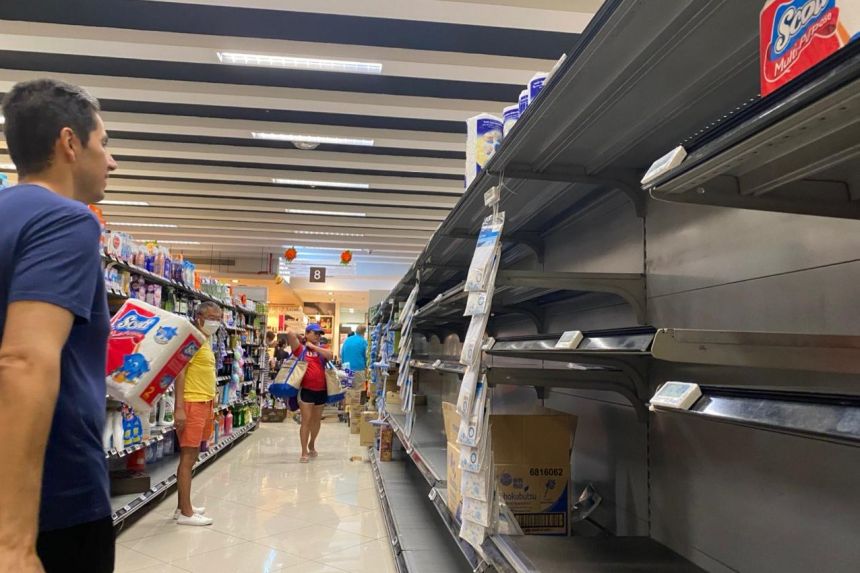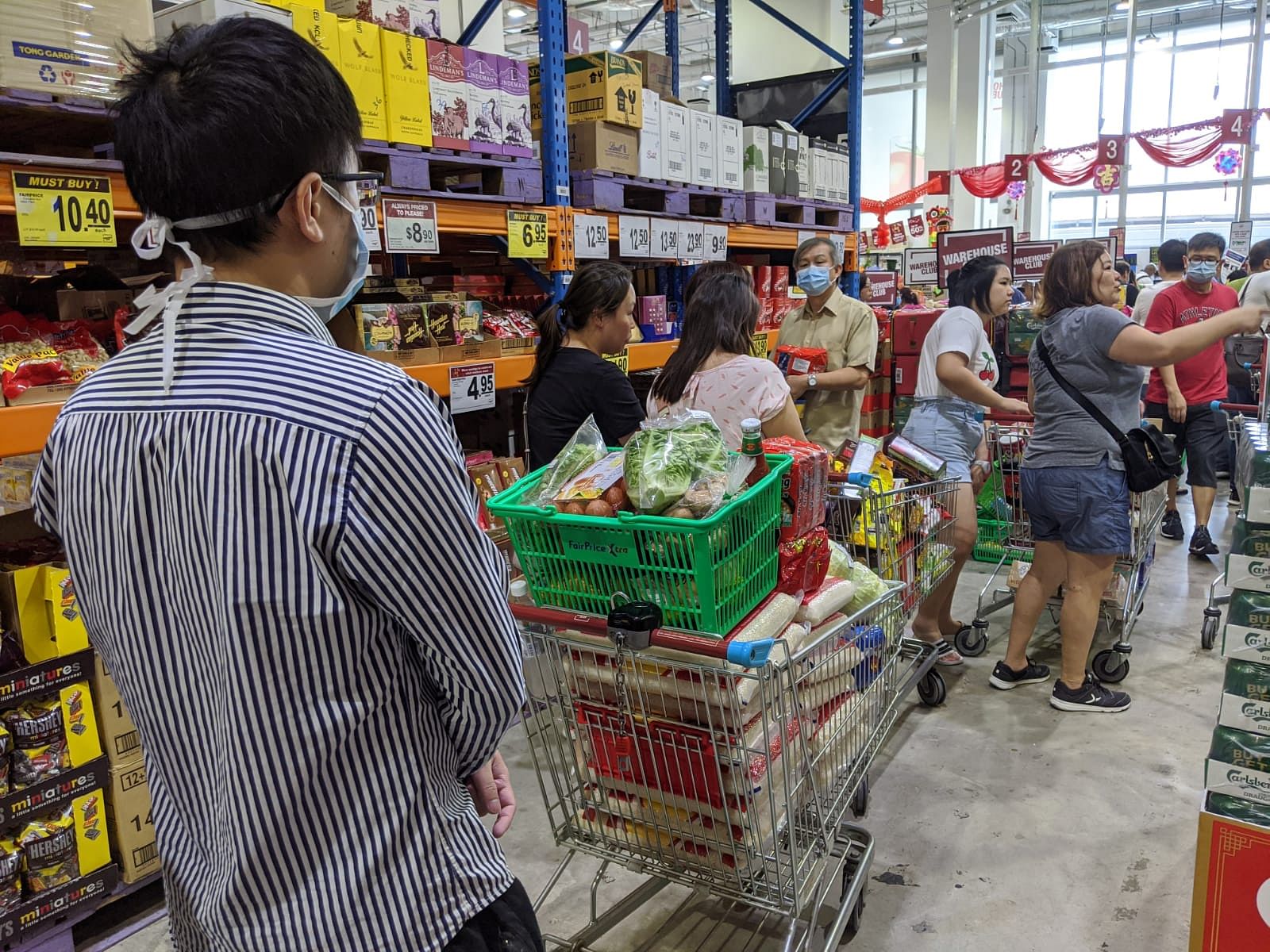Panic buying driven by fear, perceived lack of supplies and peer pressure: NTU study
Sign up now: Get ST's newsletters delivered to your inbox

Researchers found that those with higher incomes were more likely to engage in this behaviour.
ST PHOTO: MALCOM MCLEOD
Follow topic:
SINGAPORE - Panic buying behaviour during the Covid-19 pandemic last year was driven by fear, perceived lack of supplies and peer pressure, according to a study by the Nanyang Technological University (NTU).
It found that those who experience these social and psychological factors are 43 per cent more likely to panic buy.
These findings were released on Monday (Sept 6) based on a survey of about 500 Singaporeans who were asked to recall the first time they visited a supermarket after the circuit breaker began in April last year.
Long queues and empty shelves were seen at supermarkets hours after the Government announced that measures would be tightened to curb the spread of Covid-19.
NTU's survey, conducted in June and July last year, sought to understand the reasons for people panic buying, which can put a strain on supply chains and food security.
Assistant Professor Yuen Kum Fai, who led the study, said: "We have seen measures to address the detrimental impact of panic buying, such as stores rationing essential items and modifying their opening hours."
Prof Yuen, who is from NTU's School of Civil and Environmental Engineering, added: "But our study tackles the root problem of the situation - the psychological and social components of panic buying."
The median age of the respondents was 42.4 and about half of them were male.
Elaborating on how fear is a powerful motivator for panic buying, Prof Yuen said: "Fear (in this context) refers to fear of the unknown, uncertainty over when the pandemic will end, whether we will face price increases."
As for social pressure, this was two-fold - the behaviour of people in one's social circles and what one sees online.
For instance, respondents were asked about the degree to which their family, friends, or colleagues find it acceptable to stockpile products. They were also asked to what extent they agreed that the media depicted panic buying.
Age and gender did not have a significant impact on panic buying.
But the researchers found that those with higher incomes were more likely to engage in this behaviour.
They said this was because people with higher incomes tend to have more purchasing power and can stock up on goods.
Other factors driving panic buying that the researchers identified include perceived scarcity, or the notion that food and household supplies were running out, and perceived severity, such as concerns about how Covid-19 can impact one's health and finances.
Participants can sometimes experience these factors at the same time.
Speaking to reporters on Monday, Prof Yuen noted how the study is a first step to reduce panic buying during future crises.
He added that public policy can take into consideration the role that social media and news outlets play in depicting panic buying.
Dr Emily Ortega, head of the psychology programme at the Singapore University of Social Sciences, suggested that individuals can play a part in reducing panic buying.
She said: "Negative messages commonly go viral faster than positive ones. Stop and ask yourself if it is necessary to spread this emotion to others (on social media)."

Strategy professor Lawrence Loh from the National University of Singapore Business School said that assurances from figures of authority have to go beyond words.
Prof Loh added: "Earlier this year when there was the Jurong Fishery Port cluster, we saw our leaders visiting warehouses and assuring people there was enough food."
However, he said that given how the Covid-19 pandemic has stabilised, it is less likely people will panic buy now.
Prof Yuen added that further research will look at similar behavioural patterns in other countries as well as how these social and psychological factors vary across different time periods of the Covid-19 pandemic.

